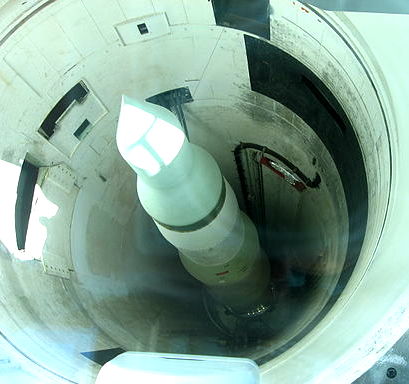A recent New York Times editorial, Wresting with an Aging Arsenal, reiterates a key point UCS has been making about U.S. nuclear weapons policy: it’s stuck in the past—a carry-over from a different era that does not address the main threats in today’s world.
As the editorial says:
The arsenal simply does not play a role in defending the country against big threats, like terrorism and cybersecurity. Two decades after the end of the Cold War, many of the missiles are still kept on hair-trigger alert, even though they almost certainly will never be fired. The main target, Russia, is no longer the same military adversary, despite tensions over Ukraine.
Mr. Obama still has time to advance the sensible disarmament agenda he once espoused. That will mean more honest discussion of the diminished importance of nuclear weapons.
A common response to arguments like this is that even though nuclear weapons may not be as relevant in today’s security environment, we shouldn’t change the status quo if it isn’t broken.
But the status quo is, in fact, broken, since it puts us at much higher risk than it should.
In particular, the U.S. policy of keeping nearly 1,000 nuclear warheads on hair-trigger alert—which allows them to be launched within a matter of minutes—increases the risk of a nuclear launch due to an accident or error. Russia keeps a similar number of warheads on high alert.
This policy dates to the Cold War. The U.S. and Soviet Union put their nuclear weapons on hair-trigger alert since they believed this increased deterrence against a deliberate nuclear attack, by convincing the adversary it was impossible to destroy the country’s nuclear forces before they could be launched in retaliation.
The problem is that after receiving warning of an attack, political and military leaders would have very little time—perhaps 15 minutes or less—to confirm the details of the situation, identify equipment malfunctions that could give false warning, and carry out rational decision making before making a launch decision. And a launch by either country would likely result in retaliatory nuclear strikes that would devastate both counties.
During the Cold War, leaders in both countries saw the risk of a deliberate nuclear attack by the other country as large enough that they believed the benefits of keeping weapons on high alert outweighed the resulting risks. Whether or not that assessment made sense at that time, it does not today. Today the possibility of a mistaken, unauthorized, or accidental launch poses a greater risk than a deliberate attack.
Errors and near-misses increase the risk
These risks are not theoretical. Over the past decades there have been many cases in which human and technical errors have significantly increased the possibility of nuclear use.
- In 1979, a technician mistakenly inserted a training tape into a computer at NORAD, the U.S. missile warning center. The computer then broadcast warnings of a massive incoming Soviet nuclear attack to key U.S. nuclear command centers.
- In 1980, a defective computer chip at NORAD caused a computer to broadcast warnings of an attack by thousands of Soviet missiles at a time when tension between the two countries were running high.
- In 1983, Soviet early warning satellites were fooled by sunlight reflected from clouds and indicated a U.S. missile attack, nearly leading to a Soviet launch.
- In 1995, Russian radars detected a Norwegian sounding rocket and misidentified it as an incoming U.S. nuclear missile, leading Russian leaders to begin preparations for a retaliatory launch.
In these cases, the mistakes were discovered quickly enough that disaster was averted. But the consequences of nuclear use are much too high to maintain the status quo and continue to rely on luck.
An important first step to reducing the risk of nuclear use is to take land-based missiles off hair-trigger alert. While the goal is to have Russia do the same, the U.S. should not wait for Russia to act. The United States should independently take its land-based missiles off alert; this is a rational step that would reduce the risk of nuclear use while maintaining a robust deterrent against nuclear attack. And it is something that President Obama can order without needing congressional approval.
Some people may question whether now is the time to change nuclear policy, given growing tensions with Russia. But times of tension are exactly when it is important to make sure that looming crises don’t lead to mistakes that spark an unintended nuclear exchange.
There are many ways to take land-based missiles off alert. I’ll talk about our proposal in a future post.
The bottom line is simple: Accidents happen. They shouldn’t lead to nuclear war.

